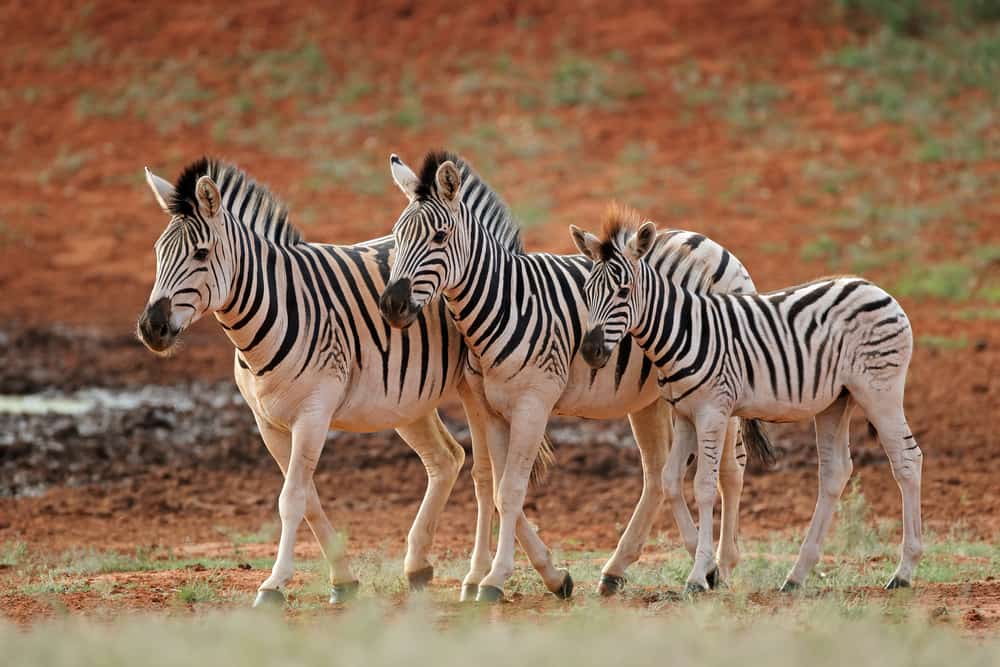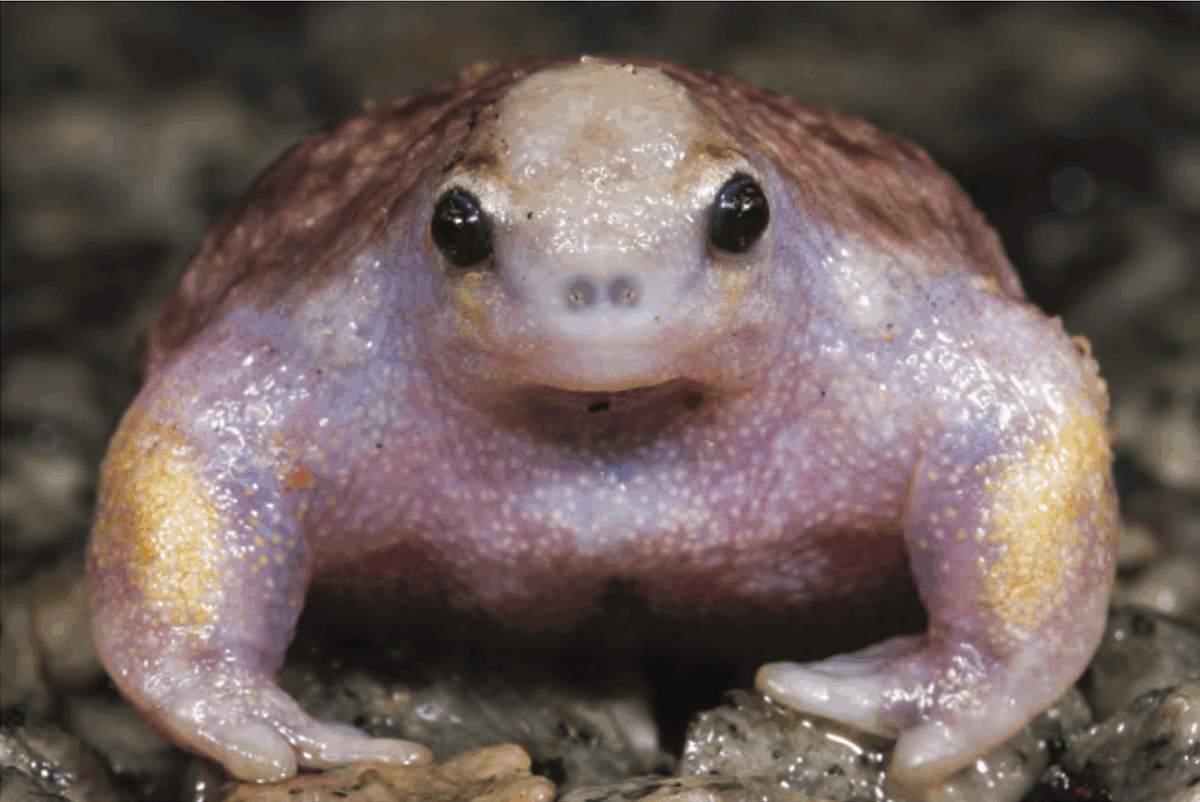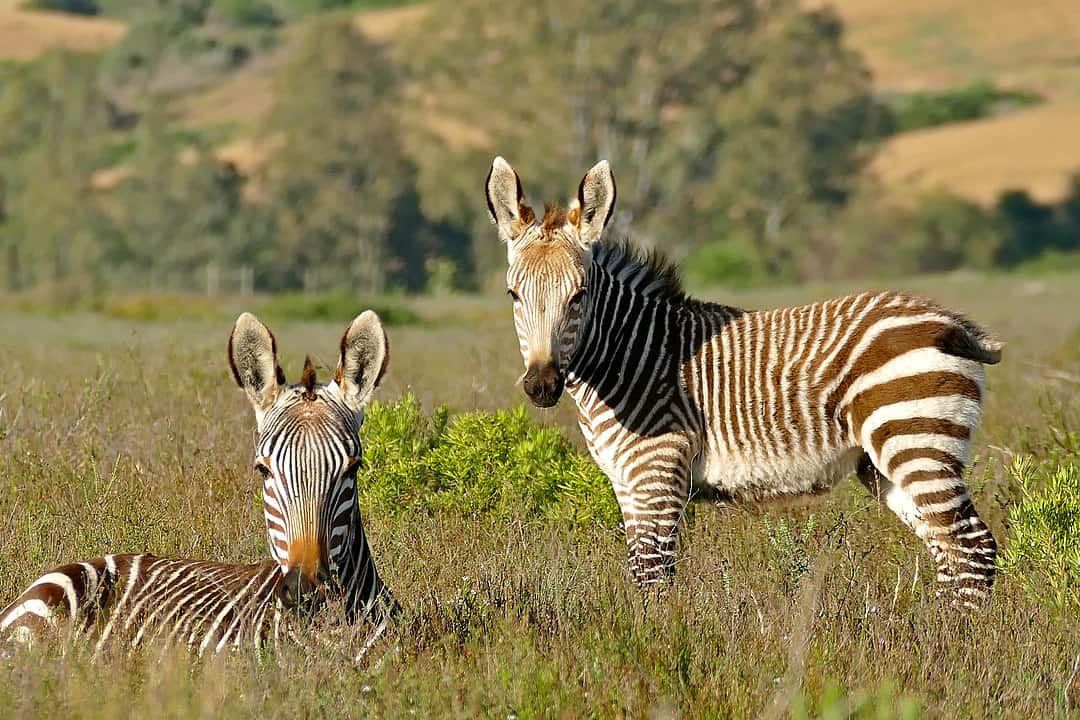In the vast wilderness of our planet, social bonds among animals extend far beyond mere survival mechanisms. While we often associate lifelong friendships with humans, many wild mammals develop profound, enduring relationships that last their entire lives. These bonds serve various purposes, from mutual protection and resource sharing to emotional support and companionship. Unlike temporary alliances formed during mating seasons or migrations, these mammals establish deep connections that withstand the test of time. The following thirteen species demonstrate remarkable loyalty and social complexity, challenging our understanding of animal relationships and revealing the depth of emotional intelligence present throughout the mammalian world.
13. African Elephants Matriarchal Bonds That Last Decades

African elephants form some of the most enduring social bonds in the animal kingdom, with female-led family units that can last up to 50 years. The matriarch, typically the oldest and most experienced female, leads her daughters, sisters, and their offspring in a tight-knit unit called a clan. Research from the Amboseli Elephant Research Project has documented relationships between female elephants that have lasted over 45 years—essentially their entire adult lives. These bonds are so strong that elephants demonstrate distress when separated from their companions and perform mourning behaviors when clan members die, including standing guard over deceased companions and returning to visit their remains for years. Their remarkable memory allows them to recognize hundreds of individuals throughout their lifetime, maintaining social networks that span generations.
12. Wolves Pack Loyalty Beyond Family Ties

Wolf packs represent one of nature’s most cooperative social structures, built on lifelong bonds that extend beyond immediate family. While most packs center around a breeding pair (the alphas) and their offspring, these social carnivores form intense emotional connections with non-relatives who join their group. Dr. David Mech, a leading wolf researcher, has documented cases where unrelated wolves have maintained loyal partnerships for over eight years. Pack members coordinate complex hunting strategies, share in pup-rearing responsibilities, and defend territories together. Their social bonds are reinforced through elaborate greeting ceremonies when reunited, play behavior throughout adulthood, and cooperative care for injured members. Even more remarkably, studies have shown that wolves remember and recognize former packmates even after years of separation, demonstrating the depth and permanence of their social connections.
11. Orcas Matrilineal Societies With Unique Cultural Bonds

Orcas (killer whales) maintain the most stable family units documented in the animal world, with individuals remaining with their maternal pod for their entire lives. Males may temporarily leave to mate with females from other pods, but they always return to their birth group. Research from the Center for Whale Research has tracked some orca family bonds lasting over 60 years. Each pod develops a distinct dialect of vocalizations and specialized hunting techniques that are passed down through generations, creating unique cultural identities. The matriarch may lead three or four generations of her descendants, with some pods consisting of up to 40 closely related individuals. These extraordinary mammals demonstrate what researchers call “post-reproductive altruism,” where older females past breeding age continue to lead pods and share ecological knowledge with younger generations, contributing to the survival of their genetic relatives through wisdom rather than reproduction.
10. Bottlenose Dolphins Complex Friendship Networks

Bottlenose dolphins develop sophisticated friendship networks similar in complexity to human social circles. Marine biologists studying dolphins in Shark Bay, Australia, have documented what they call “second-order alliances”—groups of 4-14 unrelated male dolphins that form lifelong bonds and cooperate to access breeding females. These alliances can remain stable for more than 20 years. Each dolphin recognizes every member of its alliance through unique signature whistles, essentially names, which they respond to specifically. Female dolphins also form lasting bonds with other females, particularly those in similar reproductive states. These relationships provide mutual protection, hunting advantages, and social learning opportunities. Scientists have observed dolphins traveling significant distances to reunite with specific individuals, demonstrating their ability to maintain long-term social memories and preferences for particular companions throughout their 40-60 year lifespan.
9. Chimpanzees Political Alliances and Friendship Hierarchies

Our closest living relatives, chimpanzees develop complex friendship networks that serve both emotional and practical purposes. Male chimpanzees form strategic alliances that can last decades, cooperating to rise in community rank and gain access to resources. Primatologist Jane Goodall documented partnerships between male chimps that endured for over 20 years at Gombe Stream National Park. Female chimpanzees develop fewer but deeper friendships, often forming bonds with specific individuals with whom they share food, groom regularly, and protect each other’s offspring. These relationships show remarkable stability across changing circumstances. Research from the Kibale Chimpanzee Project found that chimps who experience the loss of a close companion show elevated stress hormones and behavioral changes similar to grief. Perhaps most tellingly, studies have shown that chimpanzees with stable, long-term friendships live longer and experience better health outcomes than more socially isolated individuals—a parallel to findings in human social research.
8. Sperm Whales Oceanic Clan Systems

Sperm whales organize themselves into massive clan structures built upon lifelong relationships. Female sperm whales and their calves form nursery groups of 10-20 individuals that remain together for decades, with some documented relationships lasting over 30 years. These matrilineal units join with others into larger clans identified by distinct vocal patterns that researchers call “codas”—rhythmic clicking sequences that serve as cultural identifiers. While males eventually leave their birth groups to live solitary lives or form bachelor pods, they maintain their clan’s vocal signature throughout life. The Dominica Sperm Whale Project has documented remarkable caretaking behaviors within these groups, including “babysitting” arrangements where females take turns watching calves while others dive deeply for food. Most impressively, sperm whales physically support sick or dying pod members, using their bodies to prevent them from sinking—a behavior that serves no survival purpose but demonstrates deep social bonds and potentially emotional attachment to specific companions.
7. Lions Pride Dynamics Beyond Reproduction

Lion prides represent a complex social system where female lions, typically related as sisters, cousins, or mother-daughter pairs, form the stable core that may remain intact for generations. Unlike many social animals whose groups dissolve when breeding opportunities change, lionesses maintain their close-knit pride regardless of which males currently hold territorial rights. Research from the Serengeti Lion Project has documented sisters that have hunted together, defended territories, and raised cubs cooperatively for their entire 15-18 year lifespans. These lionesses recognize each other individually, greet with elaborate head-rubbing ceremonies after separations, and defend each other ferociously against threats. While male coalitions (often brothers or cousins) may also form lifelong alliances to compete for pride control, it’s the female relationships that provide the social continuity across generations. Intriguingly, lions show distinct preferences for certain pride-mates over others, spending more time grooming and resting beside specific individuals regardless of genetic relatedness, suggesting friendship bonds that transcend family obligations.
6. Spotted Hyenas Female Friendship Networks

Contrary to their undeserved reputation as mere scavengers, spotted hyenas maintain one of the most complex social structures among mammals, centered around enduring female friendships. Hyena clans are strictly matriarchal, with females permanently outranking all males and forming the stable core of social groups that can include up to 130 individuals. Research from the Mara Hyena Project has documented female hyenas maintaining specific friendship bonds for up to 12 years—their entire adult lives. These relationships involve mutual defense, food sharing, and assistance during hunting and cub-rearing. Most remarkably, high-ranking female hyenas appear to strategically befriend lower-ranking females who have no familial connection, creating alliances that benefit both parties through increased hunting success and reduced aggression. Cubs inherit their mother’s social network, with young hyenas forming bonds with their mother’s closest allies that will continue throughout their lives, creating intergenerational friendship patterns that persist for decades within the clan structure.
5. Plains Zebras Lifelong Harem Bonds

Plains zebras form remarkably stable social groups known as harems, consisting of one stallion, several mares, and their offspring. While this might initially appear to be a simple reproductive arrangement, research has revealed that the real social glue comes from the bonds between female zebras who choose to remain together for life. Studies in the Serengeti have documented groups of female zebras staying together for over 16 years, maintaining their social unit even when their protective stallion changes due to challenges from younger males. These female bonds are so strong that if a harem becomes too large and must split, the females themselves determine the new groupings based on their friendship preferences rather than random division. Zebra mares engage in mutual grooming, synchronize their movements, and position themselves strategically to protect each other’s foals from predators. Most tellingly, when given opportunities to join other groups with better resources, bonded females typically choose to remain with their long-term companions, demonstrating that these relationships transcend simple survival advantages.
4. Giraffes The Surprising Social Networks of the Savanna

Long mischaracterized as asocial animals with loose, random groupings, recent research has revealed that giraffes maintain complex, lasting friendships that had previously gone unnoticed by scientists. The Giraffe Conservation Foundation’s long-term studies have documented female giraffes forming specific bonds that last up to seven years—a significant portion of their 15-year wild lifespan. These relationships appear to be based on individual preference rather than familial ties, as giraffes choose to spend time with specific companions even when other options are available. Female giraffes with stable social bonds experience lower predation rates and better reproductive success, as they can trade off vigilance duties while feeding and protect each other’s calves. Most interestingly, these social networks intensify during pregnancy and early calf-rearing, suggesting a form of social support during vulnerable periods. Male giraffes, previously thought to be entirely solitary except when competing for mates, have recently been documented forming long-term bachelor groups with consistent membership and apparent social preferences for specific companions.
3. Bats The Social Lives of Flying Mammals

Several bat species develop surprisingly sophisticated social relationships that endure throughout their remarkably long lives. Female vampire bats form some of the most documented friendships, creating mutual blood-sharing partnerships that can last over seven years. Research from the Smithsonian Tropical Research Institute has shown these bats recognize specific individuals, preferentially sharing regurgitated blood with consistent partners who have helped them in the past—effectively creating a social safety net against starvation. Even more impressive are the friendships among Egyptian fruit bats, who maintain specific individual bonds within colonies of thousands. These bats roost beside the same partners night after night, even following their friends when they change location. Using sophisticated voice recognition and tracking technology, researchers at Tel Aviv University have documented that these bats actively seek out specific individuals within their massive colonies, navigating through thousands of other bats to reunite with their preferred social partners. The strength of these bonds is demonstrated when colonies split—friendships often take precedence over optimal environmental conditions, with pairs choosing to remain together even if it means relocating to less desirable roosting sites.
2. Capybaras South America’s Social Giants

The world’s largest rodents, capybaras form stable social groups of 10-40 individuals built on enduring same-sex friendships that can last their entire 8-10 year lifespan. While many social mammals separate by gender during certain seasons, male and female capybaras maintain integrated groups year-round, with both sexes developing distinct friendship patterns. Research from Venezuela’s capybara populations has documented specific pairs of females that consistently rest together, groom each other, and coordinate nursing of young in synchronized sessions that benefit both their offspring. Male capybaras form alliances that persist regardless of breeding status, with friends supporting each other during territorial disputes with neighboring groups. Perhaps most remarkably, capybaras exhibit what researchers call “friendship persistence across contexts”—the same individuals who rest together also prefer to feed together, swim together, and mutually defend against predators. This consistency across different activities suggests genuine social preference rather than mere practical cooperation, a hallmark of true friendship as defined by behavioral biologists.
1. Wild Horses and Zebras Band Loyalty Through Thick and Thin

Wild horse and feral mustang populations maintain some of the most visible and well-documented friendship bonds among mammals. These equids organize themselves into family bands consisting of one stallion, multiple mares, and their offspring—but the core social unit is actually the bonds between specific mares who choose to remain together for life. The Bureau of Land Management’s long-term studies of feral horse populations have documented mare friendships lasting over 20 years, with pairs moving synchronously, grazing within feet of each other, and mutually grooming despite no genetic relationship. When bands are disrupted by environmental factors or human intervention, bonded mares go to extraordinary lengths to reunite, sometimes traveling over 15 miles across challenging terrain to rejoin specific companions. Most tellingly, when given the opportunity to join new bands with better resources or protection, bonded mares typically choose to stay together even at apparent cost to themselves, demonstrating that these relationships hold intrinsic value beyond mere survival advantage. Wild horse friendships highlight a principle increasingly recognized by behavioral scientists: that for many mammals, the emotional benefits of specific social bonds may be as important as their practical advantages.
Conclusion: The Significance of Mammalian Friendships in Understanding Animal Cognition

The discovery and documentation of lifelong friendships among wild mammals has profoundly transformed our understanding of animal cognition and emotional capacity. These enduring bonds demonstrate that complex social relationships aren’t unique to humans but represent an evolutionary adaptation shared across many mammalian species. The fact that individuals in these thirteen species recognize, prefer, and maintain relationships with specific companions over decades suggests cognitive abilities previously underestimated by science. As research methodologies become more sophisticated, allowing for the tracking of individual animals throughout their lives, we continue to uncover evidence of emotional intelligence and social complexity that blurs the once-sharp distinction between human and animal relationships. These findings not only enhance our scientific understanding but also raise important ethical considerations about how we interact with, manage, and conserve these socially sophisticated wild mammals whose emotional lives may be richer and more complex than we ever imagined.
- 12 Creatures That Use Venom in Surprising Ways - August 13, 2025
- 13 Wild Mammals That Form Life-Long Friendships - August 13, 2025
- 12 Dogs That Turn on Their Owners When Poorly Trained - August 13, 2025

